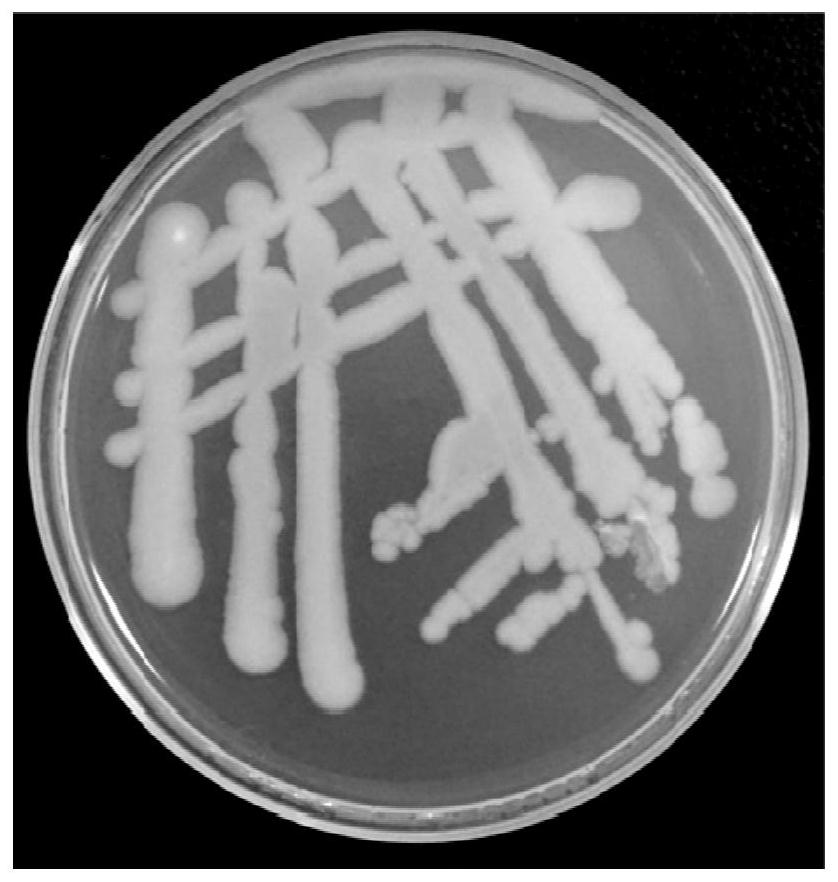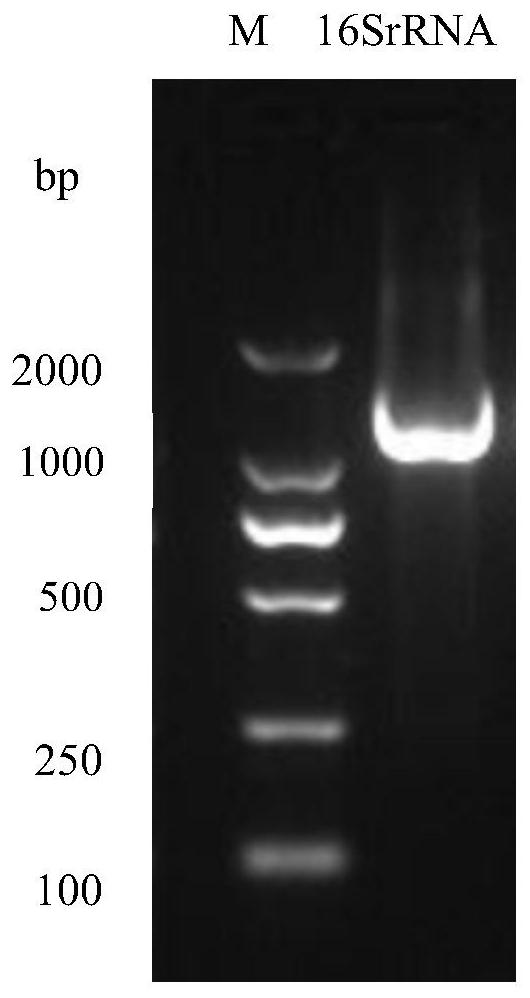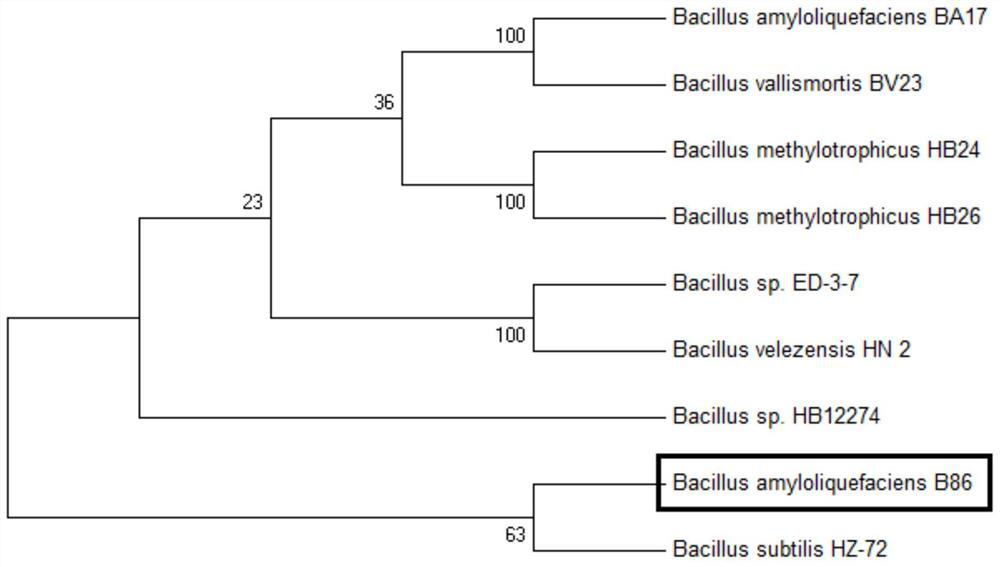Bacillus amyloliquefaciens B86 and application thereof to control over bacterial wilt of fruits and vegetables
A technology of amylolytic spores and B86, which is applied in the field of microorganisms and can solve the problems of food safety, bacteria resistance, environmental pollution, etc.
- Summary
- Abstract
- Description
- Claims
- Application Information
AI Technical Summary
Problems solved by technology
Method used
Image
Examples
Embodiment 1
[0027] Embodiment one: separation and purification method
[0028] The separation and purification method of Bacillus amyloliquefaciens B86 of the present invention, the steps are as follows:
[0029] S1: Weigh 10g of soil samples from the Mangrove National Wetland Park in Hailing Island, Guangdong Province; then, add 90ml of sterile water to the soil samples in the ultra-clean workbench, place on a shaker and vibrate for 60min , so that the soil sample is evenly dispersed in the diluent to become a soil suspension; after the soil is dispersed, draw 100ul of the soil suspension into 900ul of sterile water to obtain a 10-fold dilution, and then dilute 10 times in turn to obtain 10 2 Double dilution, 10 3 Double dilution, 10 4 Double dilution, 10 5 double dilution and 10 6 Double dilution, the whole process is carried out in the ultra-clean workbench.
[0030] S2: Take 100ul of 10-fold dilution, 10 2 Double dilution, 10 3 Double dilution, 10 4 Double dilution, 10 5 doub...
Embodiment 2
[0035] Embodiment two: culture method
[0036] S1 inoculation: the seed solution obtained in Example 1 was mixed with 2×10 6 Individual / ml inoculum concentration, 2% bacterium liquid and culture medium volume ratio inoculum quantity are inoculated in the 1000ml Erlenmeyer flask that contains 300mBacillus amyloliquefaciens B86 liquid culture medium;
[0037] S2 culture: culture the culture medium inoculated with the Bacillus amyloliquefaciens B86 at 28° C. and 180 rpm on a constant temperature shaker for 48 hours to prepare the Bacillus amyloliquefaciens B86 bacterial liquid of the present invention.
[0038]Since the Bacillus amyloliquefaciens B86 of the present invention can compete with pathogenic bacteria for nutrients and binding sites on the plant surface with pathogenic bacteria during its own growth process, thereby reducing the pathogenicity of pathogenic bacteria; on the other hand, The bacillus amyloliquefaciens B86 of the present invention can secrete antibacterial...
Embodiment 3
[0040] Example 3: PCR amplification of 16S rRNA sequence and sequencing
[0041] S1: Extraction of Genomic DNA
[0042] Genomic DNA was extracted using the Omega Bacterial DNA Kit (D3350-01) kit. First, take 2ml of the seed solution described in Example 1 in a sterile 2ml centrifuge tube, centrifuge at 12000rpm for 2min, discard the supernatant and keep the precipitate; then, add 100ul 1×TE Buffer to the precipitate, vortex to mix, add Mix 10ul lysozyme, incubate at 37°C for 10min; add 100ul BTL Buffer and 20ul proteinase K, mix well, incubate at 55°C for 1 hour, shake and mix three times in the middle; add 5ul RNaseA enzyme, mix well, stand at room temperature for 5min, centrifuge at 10000rpm for 2min , transfer 200ul of the supernatant to a new sterile 1.5ml centrifuge tube; add 200ul of BTL Buffer, mix well, and place in a warm bath at 65°C for 10min; add 200ul of absolute ethanol, vortex and mix, and transfer all the samples to In the adsorption column, centrifuge at 100...
PUM
 Login to View More
Login to View More Abstract
Description
Claims
Application Information
 Login to View More
Login to View More - R&D Engineer
- R&D Manager
- IP Professional
- Industry Leading Data Capabilities
- Powerful AI technology
- Patent DNA Extraction
Browse by: Latest US Patents, China's latest patents, Technical Efficacy Thesaurus, Application Domain, Technology Topic, Popular Technical Reports.
© 2024 PatSnap. All rights reserved.Legal|Privacy policy|Modern Slavery Act Transparency Statement|Sitemap|About US| Contact US: help@patsnap.com










